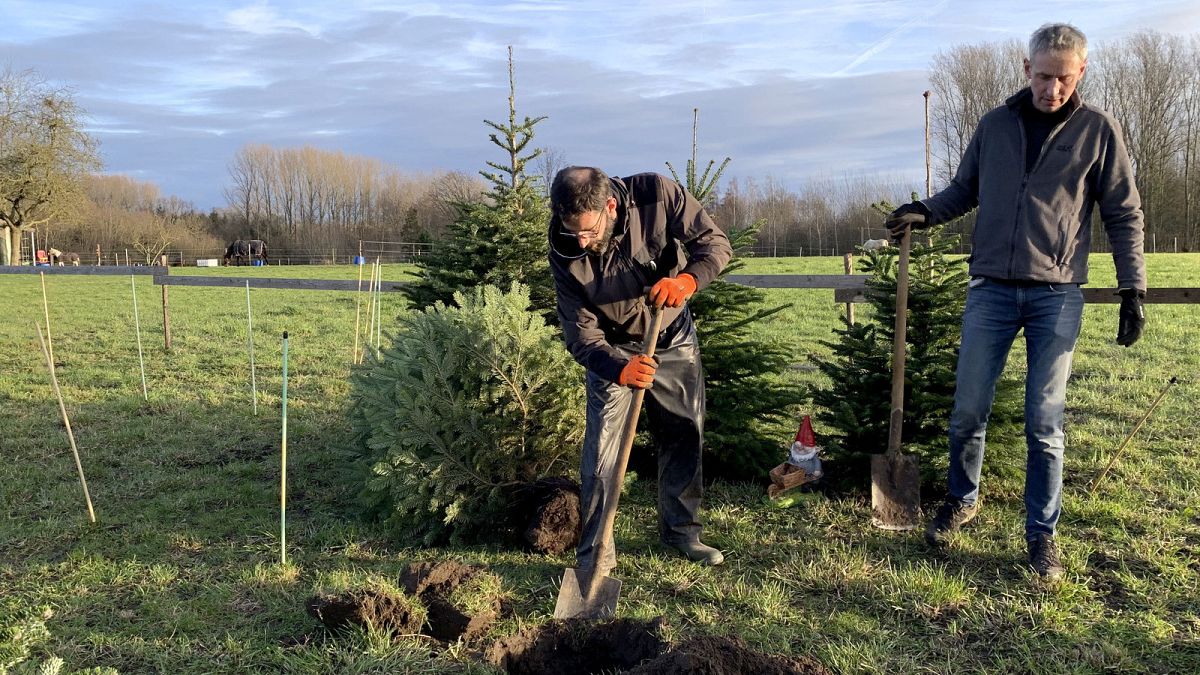Euroverify breaks down what we know about the carbon footprint of the centrepiece of Christmas decorations.
It’s a big dilemma at Christmas: is a real or artificial Christmas tree better for the environment?
It seems there’s not one clear answer and many elements to factor in when making the decision.
Experts also say that comparing the relative carbon footprint of the real and artificial options could simply be the wrong question to consider and that we should contemplate whether having a tree is necessary, given the toll on the environment.
Let’s first break down what we know about the real option.
An estimated 60 million real Christmas trees were sold in Europe in 2022 alone, according to the Polish Trade Ministry. Denmark, Poland and Germany are the leading European exporters.
Christmas trees are usually evergreen conifers, such as fir, pine, or spruce, with a typically nine to 10-year harvest cycle. It means that for each tree that is felled, another one is usually planted to replace it.
When well-managed, Christmas tree plantations can have a positive impact on the environment. Trees absorb carbon from the atmosphere and store it, and can also provide a refuge for a variety of species, including those in decline.
But if not managed sustainably, Christmas tree farms can displace natural ecosystems, according to a study by consulting firm Ellipsos.
The chemical fertilisers used in plantations also have a negative environmental impact and can cause pollution affecting rivers, lakes and ecosystems, according to Dr Paul Caplat, Senior Lecturer in Ecology at Queen’s University Belfast.
“Pesticides are used because Christmas tree farms are monocultures, in which a single species is grown at high density, which puts them at risk of parasitism and diseases,” Dr Caplat explains. “Growing trees organically can reduce that impact, although this might result in “wonky” trees that are less formatted in shape.”
Experts recommend opting for a locally grown tree from an ecological plantation.
What happens to the tree at the end of its useful life is considered essential for reducing its carbon footprint.
Replanting a tree, such as in a pot, is the preferred method as it allows continued use. Composting or mulching the tree to be spread over the garden is also recommended.
But a tree that is thrown into landfill after use will emit methane, a gas more potent than carbon dioxide, as it decomposes.
According to the Carbon Trust, a typical natural tree that is burnt after use has a 3.5 kg carbon dioxide footprint, but it jumps to 16 kg of CO2 if it ends up in a landfill.
Pros of artificial tree depends on recycling and years of use
A two-metre-tall artificial tree, in comparison, is estimated to produce about 40 kg of carbon dioxide, ten times more than a natural one that is disposed of appropriately.
They are often manufactured using petroleum-based materials and primarily shipped from China, adding to their environmental footprint.
It means that an artificial tree would need to be re-used for at least a decade for its footprint to be comparable to that of a real tree.
However artificial trees are often extremely difficult to recycle due to the mix of materials used. This disincentivizes their reuse or recycling.
According to the University of Sheffield, around seven million Christmas trees end up in landfill in the UK each year, releasing an estimated 100,000 tonnes of harmful greenhouse gases into the environment.
If opting for the artificial option, experts suggest buying a high-quality tree and ensuring it is re-used for at least a decade.
Read the full article here


